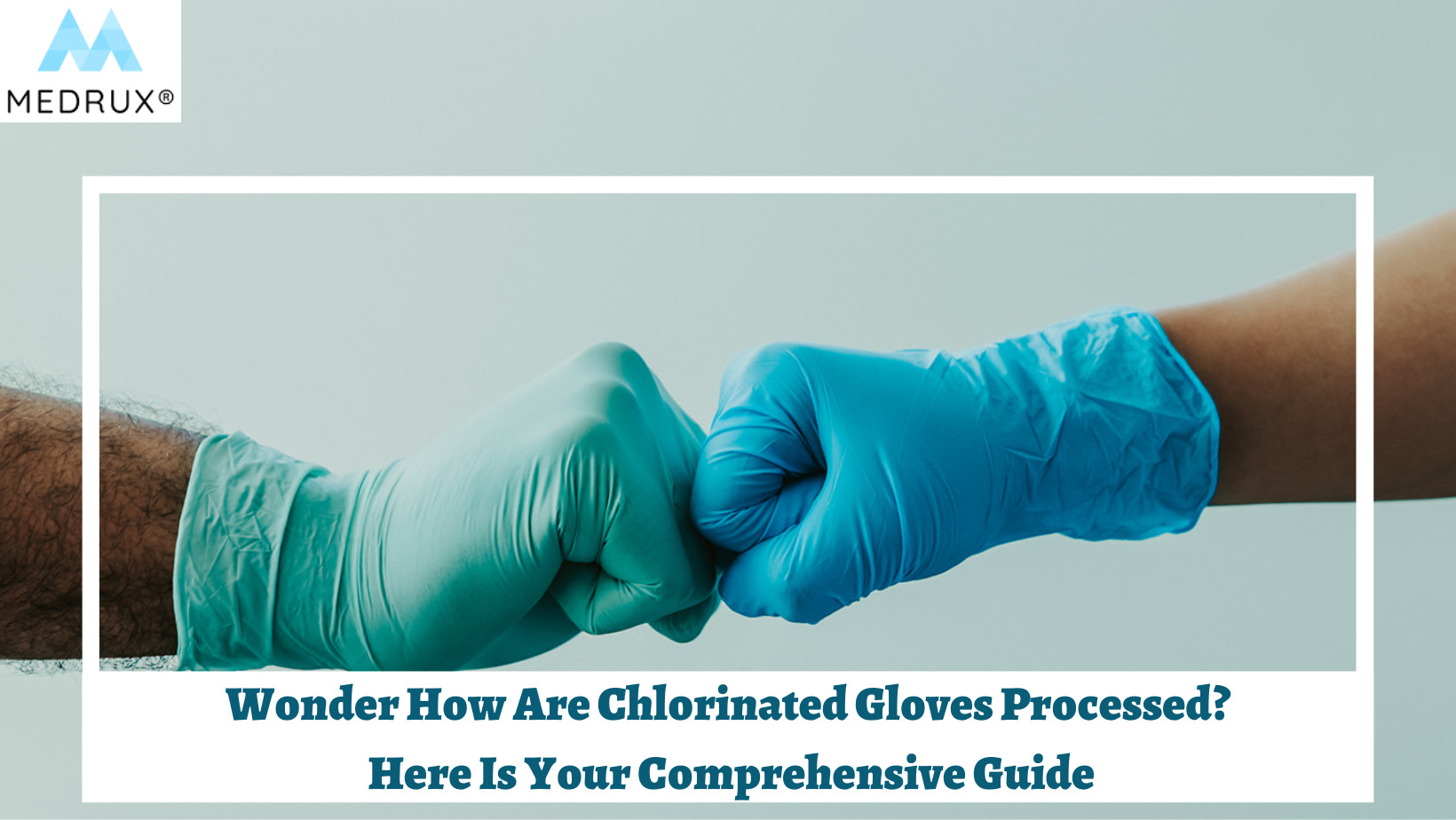Are you looking for information about isolation gowns?
Fear not; if you need to know everything about isolation gowns, then you’ve come to the right place. Isolation gowns are a piece of PPE used to shield the wearer’s clothing from contamination.
However, there is much more to them than that.
Throughout this article, we will examine the following:
- Medical gowns
- Isolations gowns
- Materials used to manufacture isolation gowns
- The critical feature of isolation gowns
- The AAMI levels of safety
- Sterilization of medical gowns
- Tips for choosing the suitable gowns
- A comparison between surgical and isolation gowns
- How to don and doff the gowns
- Things to avoid when handling isolation gowns
- How to conserve isolation gowns?
- Alternatives to isolation gowns
The article will help you acquire enough data to make an informed decision and purchase a suitable gown.
What is a medical gown?
Medical gowns are a part of the personal protective equipment (PPE) used by healthcare providers in different health facilities.
All PPE is used for protection [1]. This includes gloves, masks, helmets, goggles, hazmat suits, and other PPE.
Thus, a medical gown is a physical barrier protecting physicians, nurses, and patients. This barrier protects them from the transmission of pathogens. They shield the wearer’s body from blood, urine, and bodily fluids.
However, the medical gown is a broad term that encompasses several types. Medical dresses can be categorized into:
- Surgical gowns
- Surgical isolation gowns
- Non-surgical gowns, also known as isolation gowns
Throughout this article, we will examine Isolation gowns thoroughly.
What are isolation gowns?
Isolation gowns are one of the categories of medical gowns. They are classified as class I medical devices by the US FDA.
Additionally, isolation gowns are the second most used PPE. However, gloves are the most commonly used personal protective equipment.
Therefore, isolation gowns can be used by healthcare providers and patients to protect them.
Whether administering an injection or examining a patient in the ER, there is the risk of pathogen exposure. Isolation gowns protect you from microorganisms and bodily fluid splatter.
Materials used in manufacturing isolation gowns
As previously mentioned, isolation gowns are essential for protection. They are also used for different purposes.
Therefore, they are manufactured using different materials. Isolation gowns can either be disposable or reusable, depending on their fabric.
The use of reusable isolation gowns is more common in Europe. At the same time, disposable isolation gowns are trendy in the US [2].
Disposable isolation gowns
Disposable isolation gowns are meant to be used one time and disposed of afterward. Therefore, they are manufactured using synthetic non-woven materials. These materials are compressed to form a plastic film.
For instance, there are:
- Polypropylene disposable gowns
- Polyester disposable gowns
- Polyethylene disposable gowns
These materials are compressed using either thermal, mechanical, or chemical methods.
The plastic fabric’s close, non-woven structure guarantees the gown’s strength. Additionally, the manufacturing techniques determine the gown’s integrity.
Reusable isolation gowns
Reusable isolation gowns, however, are intended to be used more than once. Therefore, these gowns are manufactured to allow them to be washed and sterilized.
However, these gowns are made from an interlocking and woven material. Reusable isolation gowns include:
- Cotton reusable gowns
- Polyester reusable gowns
- Polyester/Cotton blend reusable gowns
Thus, these gowns are washed after each use. Additionally, these gowns can withstand up to more than 50 wash cycles.
However, the manufacturer determined the number of washes according to the tests they conducted.
Bottomline
Isolation gowns are divided into reusable and disposable isolation gowns according to the materials used in their manufacture.
Disposable isolation gowns are manufactured from a thin plastic film. They can be made using polypropylene, polyester, or polyethylene.
On the other hand, reusable isolation gowns are meant to be used more than once. Therefore, they can be manufactured using cotton, polyester, or both.
What are the critical features of isolation gowns?
The primary purpose of isolation gowns is to act as a barrier against biological hazards. Thus, these gowns must comply with specific features to fulfill their role.
The most important of these features are:
-
The fabric
The fabric of the gown itself is affected by two main factors. These factors are the fibers and the number of twists in the yarn.
-
Fibers
The fibers’ length and shape affect the fabric’s ability to absorb and transmit any material. For instance, short and irregular fibers have low absorbability.
Natural fibers, like cotton, have higher absorbability. Therefore, they are not ideal as they may trap microorganisms within the fabric.
Thus, microfibers are preferred in manufacturing isolation gowns. Synthetic materials have lower absorbability, so the liquid will slide over the gown’s fabric.
-
Number of twists
The number of twists in the yarn determines the size of the pores in a gown.
Usually, isolation gowns are woven or non-woven. Using a non-woven manufacturing technique reduces the number of pores.
Thus, non-woven isolation gowns have lower liquid permeability.
It should be noted, though, that the cuffs of the gowns are usually knitted. This reduces their ability to rebuff liquids.
Bottomline
The fabric of the isolation gown determines its ability to reject and prevent the permeation of liquids. Thus, the length and shape of the fibers have a direct impact on the gown’s absorbability.
Additionally, the number of twists in the yarn determines the number of pores in the gown.
Therefore, it is more idealistic to use a synthetic microfiber material to manufacture an isolation gown. Additionally, the gown is recommended to be manufactured using a non-woven technique.
-
The design
The design of the isolation gown is a critical feature that affects the quality of the gown. For instance, the design of the gown must ensure the following:
- Strength and fit
- Ease of donning and doffing
- Comfort and flexibility
- Effectiveness in shielding from biohazards
- Affordability of the gown
- Ease of maintenance (in the case of reusable isolation gowns)
Additionally, there are some aspects of the gown design that must be taken into consideration.
For example, the glove-gown interface is usually a primary source of leakage. Therefore, the gown design should ensure that the gloves can securely tighten the cuff.
Moreover, studies revealed that the forearm, thigh, chest, and abdomen are more susceptible to liquid exposure. Therefore, the gown’s design should guarantee the protection of these areas.
Bottomline
The gown’s design should provide the wearer with comfort and protection.
Therefore, a gown must protect the healthcare provider from glove-gown leakage. The gown’s design should also offer adequate protection to the forearm, thigh, chest, and abdomen.
What do the different levels of medical gowns mean?
Due to the importance of medical gowns, the FDA required that their manufacturer follow specific standards.
The American National Standards Institute (ANSI) and the Association of the Advancement of Medical Instrumentation (AAMI) issue these standards.
Thus, according to ANSI/AAMI PB70:2012 standards, medical gowns are divided into four levels of safety.
-
Level 1 medical gowns
This level gown offers minimal protection.
Therefore, they can only be used by those visiting healthcare facilities or in clinical settings with no danger. They can’t be used when a healthcare provider is expected to handle bodily fluids.
Thus, level 1 medical gowns are isolation gowns that offer protection against a small quantity of fluid. They are subjected to a test to determine the impact of water on the gown (Fluid resistance, AATCC 42).
-
Level 2 medical gowns
Level 2 gowns are also used as isolation gowns.
These gowns can handle low-risk medical situations. For instance, they can be worn during suturing or drawing blood. They can also be used by healthcare providers, patients, and visitors in the ICU.
Thus, these gowns can withstand more fluid exposure than level 1. Level 2 isolation gowns are subjected to the fluid resistance test as well.
However, the gown material is also subjected to pressure to determine its strength (Hydrostatic pressure, AATCC 127).
-
Level 3 medical gowns
These are considered surgical isolation gowns.
They can be used to draw blood, administer IV fluids, and care for trauma cases. Level 3 surgical isolation gowns are used in moderate-risk medical situations.
Therefore, they are ideal for the emergency room (ER).
However, this level of medical gowns conforms to a higher set of standards. They are considered class II medical devices by the FDA.
Therefore, they must adhere to the guidelines found in the 510k summary.
-
Level 4 medical gowns
Level 4 medical gowns are also known as surgical gowns.
These gowns are meant to be used in high-risk medical situations like surgeries. They offer the highest level of protection against pathogens and microorganisms. Surgical gowns conform to all the standards of the previous three classes.
However, they are also tested to determine their ability to shield the user from pathogens.
They are examined using simulated blood containing viral load (ASTM F1671). The test determines whether the gown’s material will allow the virus to penetrate or not.
Thus, surgical gowns are required to prevent all fluid and viral penetration for at least 1 hour.
Bottomline
| Safety level | Gown type | Risk level | Tests & standards | |
| Level one | Isolation gown | Minimum | AATCC 42 | Used by patients and visitors |
| Level two | Isolation gown | Low | AATCC 127, AATCC 42 | Used in ICUs by visitors and HCW |
| Level three | Surgical isolation gown | Moderate | AATCC 127, AATCC 42, 510K summary | Used in ERs |
| Level four | Surgical gown | High | All the previous tests and a viral penetration test | Used during surgeries |
Are isolation gowns sterile?
Sterilization of isolation gowns is essential if healthcare providers use them.
These medical devices are used to prevent the spread of infections. Thus, they must be pathogen free themselves. However, non-sterile disposable isolation gowns may be used by patients and visitors.
-
Definition of sterilization
Sterilization kills and eliminates all microorganisms and spores from an object’s surface [3]. Yet, proving that an object is entirely sterile is a tricky process.
But fear, not several methods have been studied and tested, and they proved effective in eliminating pathogens.
-
Methods for sterilization
According to the FDA, the sterilization methods of medical devices can be divided into conventional and novel approaches. Thus, to sterilize isolation gowns, a manufacturer must follow one of the following methods.
-
Conventional methods
These methods have been used for decades. Thus, they are proven more than adequate. These methods include:
- Dry heat
- Moist heat or steam
- Radiation (gamma rays)
- Ethylene oxide (EO)
- Hydrogen peroxide (H2O2)
- Ozone
-
Novel methods
The FDA has not thoroughly tested these methods. However, they can still be used in sterilizing gowns.
- High-intensity light or pulse light
- Microwave radiation
- Sound waves
- Ultraviolet light
Bottomline
Sterilization of isolation gowns is essential.
The manufacturer must list the sterilization method and the standards the methods follow. Additionally, the package of the isolation gown should be able to preserve the sterility of the gown.
How to choose a suitable medical gown?
There are three factors to take into consideration when you are purchasing a medical gown. These factors are:
-
The purpose of the gown
To determine the objective of purchasing the isolation gown, you must ask yourself several questions. Where will the gown be worn? By whom will it be worn? And what is the risk exposure they will face?
These questions will help you decide if you need a surgical or a non-surgical gown.
-
The required level of safety
After determining which type of gowns you want to purchase, you should consider the AAMI safety levels. You may need to re-examine the four safety levels to make the most suitable choice.
-
The material and fit
Finally, it would be best to consider whether you would like to purchase a reusable or a disposable gown.
Additionally, determining the risk level and the purpose of the gown first will help you select the suitable material. For instance, plastic disposable gowns are ideal for visitors and patients.
However, it would be best if you also considered whether you would purchase a variety of sizes or one size fit all.
Bottomline
The choice of suitable isolation gown is affected by the material and the level of exposure. Additionally, the purpose of the gown is a critical factor in determining which gown to use.
Isolation gowns vs. surgical gowns
The main difference between the two types of medical gowns is their classification according to the US FDA. Surgical gowns are classified as class II medical devices, while isolation gowns are considered class I.
-
Class I medical devices
These are devices that conform to the general guidelines of the FDA. However, they are not used to preserve life or prevent death.
However, they are intended to provide a level of protection to the user. In the case of isolation gowns, they are expected to cover as much as possible of the human body.
-
Class II medical devices
These devices are required to follow more than the standard rules of manufacturing. Each of these devices has a specific set of regulations to adhere to. Thus, they offer a higher level of protection than class I devices.
Additionally, class II devices contribute to saving and preserving human life. Aside from surgical gowns, this class includes powered wheelchairs, infusion pumps, and air purifiers.
Bottomline
Surgical gowns are meant to protect the front and arm area essentially. They are classified as class II medical devices and can handle moderate to high-risk medical situations.
Isolation gowns are meant to protect the entire body. However, they are class I medical devices. Thus, they can only offer protection against minimum to low-risk medical situations.
How can I don and doff the isolation gowns?
Whether you are using sterile or non-sterile isolation gowns, you need to don and doff them in an aseptic manner.
Donning an isolation gown
- Wash your hands.
- Make sure you have the correct size.
- Hold the gown from the collar and open it. Isolation gowns are tied using straps at the back.
- Insert your right arm inside the right sleeve.
- Do the same with your left arm.
- Raise your arms slightly to allow the gown to slide.
- Fasten the ties of the collar and then the waist. Make sure the ties are secure.
Doffing an isolation gown
- Unfasten the ties at your collar and waist.
- Pull your right arm out of the right sleeve while ensuring it gets turned inside out.
- Repeat the same process with your left sleeve.
- Fold the gown while maintaining its inside-out state.
- Roll them tightly.
- Dispose of them in the designated area.
- Wash your hands.
Do’s and don’t of using isolation gowns.
There are some essential tips you should adhere to when using isolation gowns.
The Do’s
- Hand hygiene is always essential before donning and after doffing.
- You must wear a gown if you are handling bodily fluids.
- Make sure the gown protects your clothing adequately.
- Dispose of used gowns in the designated area before leaving the ER, OR, or the patient’s room.
The Don’ts
- Avoid reusing contaminated gowns. Wait for reusable gowns to be cleaned and sterilized before reusing them.
- Avoid pulling up your sleeves, as this will compromise your safety.
- Don’t wear the isolation gown outside of the designated areas.
- Don’t use non-sterile isolation gowns for surgeries or invasive procedures.
- Don’t throw disposable gowns in a manner that lets them hang from the designated area. This can lead to cross-contamination.
Conserving isolation gowns
After the COVID-19 outbreak in 2020, health facilities have been trying to conserve their supply of medical devices. Thus, some maneuvers can help preserve isolation gowns.
Use isolation gowns beyond their shelf-life
All medical devices have an expiry date. You can’t use them in surgeries or critical situations. However, if you properly store your isolation gowns, you can use them beyond their shelf life.
However, you can use them while training new physicians and nurses.
Consider gowns that conform to international standards
Isolation gowns are usually manufactured according to standards set by the local FDA.
However, in times of shortage, you should consider using gowns that conform to international standards like EN 13795 and EN14126. These standards ensure that your gown can handle moderate to high-risk exposure.
Prioritize
Gowns are important in an examination room. However, they are essential in an ER. Additionally, they should be prioritized according to the patients in question.
For instance, you should wear a sterile gown when examining an immunocompromised patient. Also, it would be best to consider wearing level 2 or 3 gowns when looking at a COVID-19 patient.
Consider your alternatives
Isolation gowns are meant to cover your clothing and protect you.
However, other alternatives can perform the same purpose if you can’t find a gown.
- Reusable coveralls
- Disposable laboratory coats
- Reusable patient gowns
- Reusable laboratory coats
- Disposable aprons
However, reusable garments should be laundered and mended regularly.
Bottomline
To conserve isolation gowns, you should:
- Consider using reusable and disposable alternatives like lab coats, aprons, and coveralls.
- Prioritize the use of gowns for critical patients and moderate to high-risk conditions.
- Use isolation gowns beyond their shelf-life when training physicians or nurses.
- Consider purchasing isolation gowns that follow international manufacturing guidelines.
Final thoughts
Medical gowns are used to protect the wearer from the splashes of bodily fluids. They are essential PPE.
Thus, isolation gowns, one of the three medical gowns, are also critical PPE. According to the level of protection they offer, physicians, nurses, patients, and visitors can use them.
Therefore, before you purchase your isolation gown, familiarize yourself with the AAMI safety levels.








